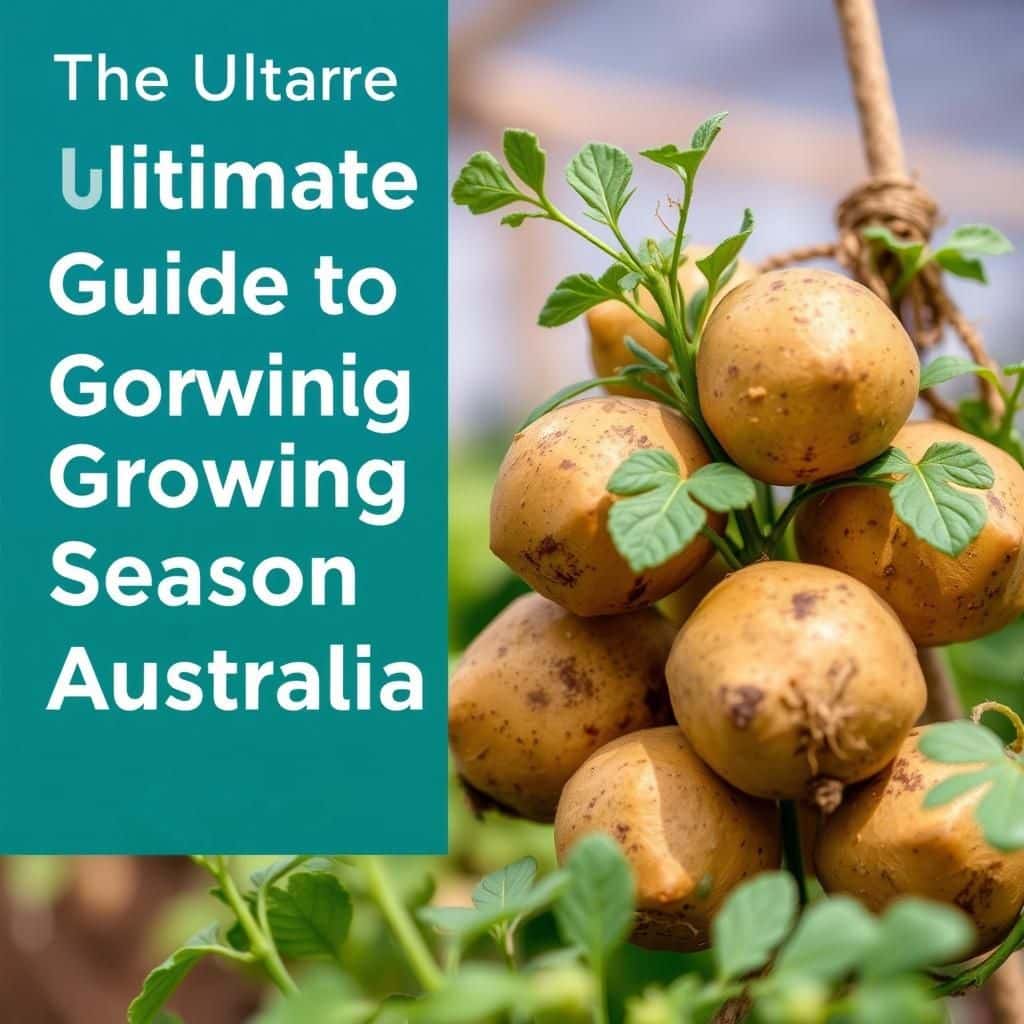The Ultimate Guide to Potato Growing Season Australia: Tips and Best Practices

The potato growing season in Australia presents an exciting opportunity for both novice and experienced gardeners to cultivate this versatile crop. With variations in climate across the country, understanding the optimal planting times, soil conditions, and care techniques is crucial for a successful yield. This ultimate guide will delve into essential tips and best practices tailored to Australian conditions, helping you navigate the intricacies of potato cultivation. From selecting the right potato varieties to managing pests and diseases, this comprehensive resource aims to equip you with the knowledge needed to achieve a bountiful harvest. Let’s dig in!
Understanding the Potato Growing Season in Australia
The potato growing season in Australia varies depending on the region, with major growing areas including Tasmania, South Australia, and Victoria. Generally, the season starts in spring, around September, and can extend into summer, concluding around March. The optimal conditions for potato cultivation involve well-drained soil, moderate temperatures, and sufficient water supply. Farmers often plant seed potatoes in rows, ensuring they have enough space for growth and tuber development. Understanding the specific climate and soil requirements for growing potatoes is crucial for achieving a successful harvest in the Australian agricultural landscape.
Regions Suitable for Potato Cultivation
Australia's diverse climate allows for potato cultivation in several regions. The primary areas include Tasmania, known for its cool climate, and Victoria, where the diverse soils support high yields. Queensland also contributes to potato production, particularly in the cooler highlands. Each region offers unique advantages, from climatic conditions to soil fertility, making it essential for farmers to choose the right location for optimal growth.
Planting Techniques and Timing
Timing is crucial in the potato growing season. Most farmers plant potatoes from September to October, ensuring that the crop is well-established before summer's heat. Techniques such as hilling help manage irrigation and allow for good drainage. Farmers prepare the soil beforehand by tilling and adding organic matter, which significantly enhances soil fertility and structure, promoting healthy potato growth.
Pest and Disease Management
Effective pest and disease management is vital during the potato growing season. Common pests include potato beetles and aphids, while diseases can range from blight to root rot. Farmers implement integrated pest management (IPM) strategies, which may involve crop rotation, resistant varieties, and timely applications of pesticides. Regular monitoring of crops allows for the quick identification of potential issues before they escalate into major problems.
See also:
Harvesting Techniques
Harvesting typically begins in late February and can continue through March, depending on the variety and growing conditions. Farmers use mechanical harvesters or do manual digging to ensure minimal damage to the tubers. The timing of the harvest is critical, as potatoes should be harvested when their skin has set, allowing for better storage and shelf-life. Proper techniques and timing help maximize yield and quality.
Market Trends and Demand
The demand for potatoes in Australia has seen fluctuations based on consumer preferences and market trends. With the rise of the healthy eating movement, there is increasing interest in different potato varieties, including sweet potatoes. Local farmers are adapting by diversifying their crops to meet market demands. Export opportunities also exist, particularly for high-quality Australian potatoes, which can perform well in international markets.
| Category | Details |
|---|---|
| Optimal Planting Time | September to October |
| Harvesting Period | Late February to March |
| Major Growing Regions | Tasmania, Victoria, South Australia |
| Common Pests | Potato beetles, aphids |
| Key Diseases | Blight, root rot |
Understanding the Potato Growing Climate in Australia
The potato growing season in Australia is significantly influenced by the climate and geography of the region. With varying temperatures and rainfall, the ideal planting times can differ. Generally, potatoes thrive in cool to moderate climates, with ideal temperatures ranging between 15°C and 20°C. It's essential for growers to be aware of local climatic conditions, particularly frost risks which can damage young plants. Additionally, regions in Australia such as Tasmania and Victoria provide ideal environments due to their consistent rainfall and well-draining soils. Understanding these elements is crucial to optimizing growth and yield.
Choosing the Right Potato Varieties
Selecting the right potato varieties is a fundamental aspect of successful potato cultivation in Australia. There are numerous types available, with popular choices including Russet, Kipfler, and Royal Blue, each offering unique flavor profiles and uses. Growers should consider local conditions and their intended purpose, whether for baking, boiling, or frying. By matching potato varieties to the intended market and growing conditions, farmers can maximize both quantity and quality of their harvest.
Soil Preparation and Fertility
Proper soil preparation is essential for a productive potato crop. Potatoes prefer loamy, well-draining soil that is rich in organic matter. Before planting, it is advisable to conduct a soil test to check for nutrient levels and pH balance. Amending the soil with compost or aged manure can help enhance fertility and structure. Moreover, ensuring good drainage can prevent waterlogging, a common issue that can lead to rot and other diseases affecting the potatoes.
See also:
Watering Techniques for Healthy Growth
Water management plays a crucial role in the growth of healthy potatoes. Potatoes typically require consistent moisture, especially during the tuber development stage. While it's important to keep the soil evenly moist, excessive watering can lead to root diseases. Implementing efficient irrigation systems, such as drip irrigation, can optimize water usage and deliver moisture directly to the roots, minimizing water waste and reducing disease risk. Monitoring rainfall and adjusting watering schedules accordingly is essential for the successful crop.
Pest and Disease Management
Effective pest and disease management is vital for protecting potato crops in Australia. Common pests include aphids, wireworms, and potato beetles, all of which can cause significant damage if left unchecked. Implementing integrated pest management strategies, such as crop rotation, using resistant varieties, and introducing natural predators, can help mitigate pest issues. In addition, keeping a close eye on disease symptoms, particularly late blight and blackleg, allows for prompt action to prevent widespread infection in the crop.
Harvesting and Storage Best Practices
Knowing when and how to harvest is critical for ensuring the quality of potatoes. Timing the harvest is essential; potatoes should be harvested when the foliage begins to yellow and die back. Handling tubers with care during the harvest process minimizes bruising and damage. After harvesting, it’s crucial to cure the potatoes in a dark, ventilated environment for a week to enhance skin toughness. Proper storage conditions, including cool temperatures and low humidity, are necessary to prolong the shelf life and maintain the quality of the potatoes.
Questions from Our Readers
When is the potato growing season in Australia?
The potato growing season in Australia typically varies by region, but generally, it runs from September to December for the main crop. In some warmer areas, you can also grow potatoes in winter, while in cooler regions, planting may occur in early spring.
What are the best conditions for growing potatoes in Australia?
Potatoes thrive in well-drained soil with a pH level between 5.8 and 6.5. They require full sunlight and consistent moisture to develop properly, so it is crucial to keep the soil moist but not waterlogged throughout the growing season for optimal growth and yield.
See also:
How long does it take for potatoes to grow in Australia?
The time it takes for potatoes to grow in Australia depends on the variety, but most take 70 to 120 days from planting to harvest. Early varieties can be ready in about 70 days, while other types, especially those intended for storage, may take closer to 120 days.
What are common diseases affecting potato crops in Australia?
Common diseases that can affect potato crops in Australia include Late Blight, Powdery Mildew, and Black Spot. Preventative measures such as crop rotation, using disease-resistant varieties, and proper watering techniques can help minimize the impact of these diseases on potato yields.

If you want to read more articles like The Ultimate Guide to Potato Growing Season Australia: Tips and Best Practices, we recommend you check out our Seeds category.
Leave a Reply
Related Articles